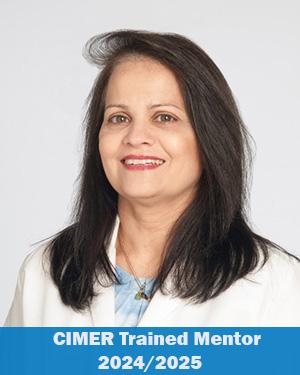Research News
04/14/2025
Metabolic chaos suppresses the immune system in severe sepsis recovery
New research shows almost a thousand metabolites inappropriately accumulated in the bloodstreams of patients with septic shock.

Inflammation and organ failure during septic shock creates “metabolic chaos,” changing virtually every way our cells process energy and build new molecules, according to recently published Cleveland Clinic findings. Many of the byproducts of these changes, molecules called metabolites, directly suppress immune cell function and contribute to the hypo-inflammatory state during severe sepsis recovery.
The findings, detailed in the Journal of Leukocyte Biology, highlight how fighting through the initial bloodstream infection is only the first step of severe sepsis recovery. The study identifies metabolic changes as a cause of hypo-inflammation, a dangerous stage of sepsis recovery where patients are vulnerable to deadly re-infection.
What is hypo-inflammation in severe sepsis?
Sepsis is a dangerous condition that occurs when your immune system has such a severe reaction to an infection it damages our bodies and organs. Healthcare providers sometimes differentiate between sepsis and severe sepsis depending on the level of damage, but the term is becoming less popular to reflect the fact that all sepsis is severe.
The most severe stage of sepsis is septic shock, which occurs when inflammation during sepsis causes dangerously low blood pressure and organ failure. Hypo-inflammation follows septic shock: our immune systems virtually “turn off” and do not mount inflammatory responses to pathogens. Study lead author Vidula Vachharajani, MD, has treated many patients for sepsis in the ICU. She says that hypo-inflammation is one of the most dangerous stages of sepsis because it leaves the patient vulnerable to pathogens that otherwise wouldn’t cause an illness.
“A patient could be admitted because of urinary tract infection and develop sepsis trying to get rid of the infection. Many patients in this situation need to be intubated to help them breathe,” she explains. “But once the patient reaches the anti-inflammatory state, they are much more vulnerable to developing ventilator-associated pneumonia as a ‘superinfection’ that the immune system is not ready to respond to.”
How does sepsis change our immunometabolism?
As a patient moves from septic shock to the hypo-inflammatory stage, metabolic pathways significantly change, and high levels of metabolites accumulate. A few researchers previously identified individual metabolic pathways and molecules that were different during sepsis, but had not put together the full list of how many metabolic pathways were altered during sepsis and septic shock. Nobody had catalogued all the metabolites that accumulate from these changes. First authors and Vachharajani Lab postdoctoral researchers, Deepmala Shrestha, PhD, and Bishnu Pant, PhD, led a project to characterize the metabolic differences between individuals receiving treatment at Cleveland Clinic for the hypo-inflammatory stage of sepsis and healthy individuals.
The team found that over 800 different metabolites accumulated in the bloodstreams of sepsis patients. Almost every metabolic pathway was affected in some way. There were extreme differences between healthy and septic donors – what Dr. Vachharajani calls “pure metabolic chaos.”
How do we find what processes are responsible for suppressing immunometabolism?
With almost a thousand molecules inappropriately accumulating in septic patients’ bloodstreams, Dr. Shrestha hypothesized that at least one of the molecules may influence the patients’ health. When she treated immune cells in a petri dish with healthy plasma and septic plasma, she found that the septic plasma prevented the immune cells from functioning properly.
“It was striking to see how plasma from sepsis patients altered the behavior of immune cells, compared to plasma from healthy volunteers,” she says. "It really showed that metabolic changes aren’t just an effect of septic shock; they’re a partial cause of the next stage.”
The team is now working to determine which of the hundreds of metabolites in the septic patients’ plasma were responsible for immune suppression. They hope to identify targets that can be influenced by diet or medication to restore immune function.
"I want to find therapies that actually help my patients survive and recover from sepsis," Dr. Vachharajani says. “I can’t forget that I’m a doctor.”
Featured Experts
News Category
Related News
Research areas
Want To Support Ground-Breaking Research at Cleveland Clinic?
Discover how you can help Cleveland Clinic save lives and continue to lead the transformation of healthcare.
Give to Cleveland Clinic